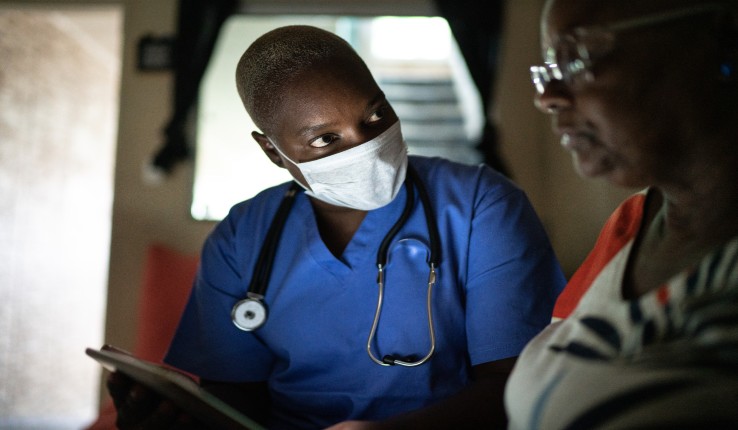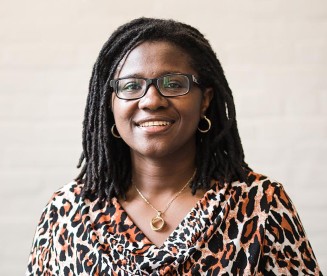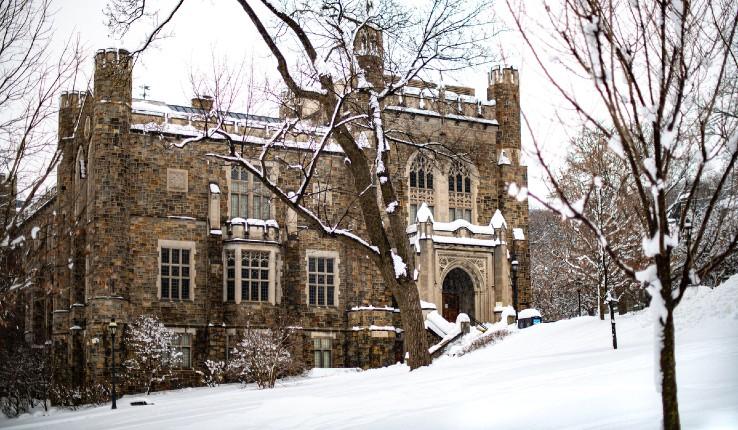Q: As someone who studies how race impacts health disparities and outcomes, can you speak to the factors that are contributing to the disproportionate impact COVID-19 is having on communities of color in the U.S?
A: Communities of color, especially Black and Indigenous communities, are disproportionately impacted because of structural racism. There is nothing inherent in their blood or bodies that make them more likely to be impacted. However, there are a lot of ways by which racism affords privileges and resources to white communities while at the same time, disadvantaging and taking away resources from communities of color.
Some indicators of structural racism include resource-poor, predominantly Brown and Black school districts, racial inequities in high school and college graduation rates and racial inequities in unemployment rates. What this means during the COVID-19 pandemic is that communities of color are more likely than the general population and than Whites to work in service industries where they cannot work from home. So they are more exposed.
Racial residential segregation is another indicator of structural racism at play here. It is a shameful thing that when you go into any city in the United States, you know which neighborhoods you can find Latinx people, Blacks, or other communities of color.This is not by accident. This residential segregation increases risks of exposure to COVID-19. Brown and Black neighborhoods are usually under-resourced, have a greater proportion of those with lower socio-economic status, have lower home values and a higher proportion of people living in poverty. People are more likely to be unemployed or living from paycheck to paycheck so they do not have the financial resources to buy two weeks or a month worth of groceries and then shelter in place. They work service jobs such as custodial staff, meat factory workers, bus drivers, garbage collectors, nursing and personal care aids―work that cannot be done from home.
In most Brown and Black low-income families, there is one adult who works an essential job. Not because they want to be heroes, but because they need to be able to put food on the table or keep a roof over their heads. If they take off from work because of the virus, they don't get paid, so they work. Their job then exposes the rest of the family.
Those who got furloughed or lost their jobs due to COVID-19 because they are custodial workers, for example, are also more likely to be uninsured and, therefore, less likely to seek care if they develop symptoms.
Racial inequities in wealth also becomes a factor when people of color, who are less likely to own cars, take public transportation, increasing their chances of exposure to the virus. In addition, environmental racism exposes people of color disproportionately to environmental toxins through proximity to pollution sources, illegal dumping of waste, poor enforcement of environmental and safe housing regulations. This has led to more chronic conditions in disproportionately Brown and Black communities that then complicate a COVID-19 diagnosis.
Similarly, cumulative stress wears and tears the body organs and systems. Stressors such as unfair policing and patrolling by ICE (U.S. Immigration and Customs Enforcement) of Black and Brown neighborhoods, limited resources, food insecurity, and education injustice/inequality, housing insecurity and residential overcrowding can lead to cumulative stress. The health of people in under-resourced neighborhoods can deteriorate in early adulthood as a physical consequence of such cumulative stress. Then when an infectious disease like COVID-19 hits, the impact is more severe.
Q: What steps should be taken―in both the immediate and the long-term―to address these disparities?
A: In the immediate, we need to involve Black, Indigenous and other people of color in policy planning and implementation around COVID-19. People who are closest to the pain and whose communities are the most impacted definitely know better what might work and what might not. In addition, we need to ensure that resources are allocated equitably. Because communities of color are disproportionately impacted, we must make sure they have greater access to testing, for example. Increasing access to telemedicine for communities of color and undocumented workers would be an important step. One way to do this is to make broad-band internet a public utility since it is necessary for telemedicine.
Providing hazard pay and loan repayment for those workers in essential jobs is key to stemming the spread of the COVID-19. In addition, there must be a move to release as many people as possible from detention, implementing suspended sentencing and limiting new arrests so as to reduce new infections in jails and prisons.
Over the long-term, we need to address the fundamental cause of these inequities: structural racism. Racism increases the risk for other diseases and conditions that complicate COVID-19 such as cardiovascular disease, asthma, diabetes, etc. Racism also leads to mistrust in the medical system. Therefore addressing residential segregation through policy is a must. This includes increasing funding for school districts that disproportionately serve communities of color, investing in community policing, and providing anti-racism education in K-12 and higher education. A key step would be the implementation of universal health care so that people are not in a position to have to choose between losing their health insurance if they stay home during a pandemic or being exposed/exposing others by working.
Q: Across the country and around the world, researchers have shifted the focus of their scholarship to better understanding a host of issues related to COVID-19―from characterizing the SARS-CoV-2 virus itself to the psychological impacts of self-isolation to the effects of social distancing on the environment. How could scholars move from knowledge generation shared solely among academics to dissemination and community relevance?
A: The academic community needs to identify our role in creating inequalities by exploiting populations for our research. Then, we must work to rebuild their trust.
We must identify how the material expansion of our institutions have come at a cost to local communities. Gentrification increases housing costs, thereby limiting access by community members to financial and other resources that matter for health. Another example is the use of contract custodial employees who are underpaid.
Scholars should engage communities that are impacted in the process of knowledge creation. This will help researchers figure out what kinds of knowledge really matters for a community's well-being. In addition, we must invest in long term relationships and partnerships with community leaders, clinicians and public health practitioners at the local and state levels. This will help in dissemination and translation of research into practice
Finally, we can explore and support other forms of knowledge dissemination specific to different audiences and communities. For example, instead of solely publishing in journals, we could host town halls―virtual, if need be―, publish newsletters, develop anthologies and training curricula, etc.






